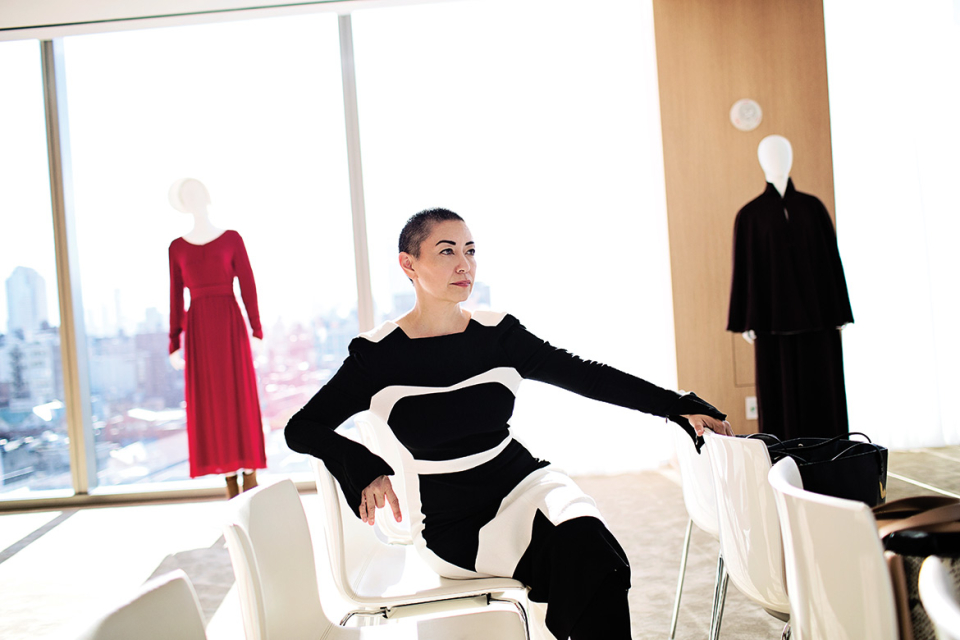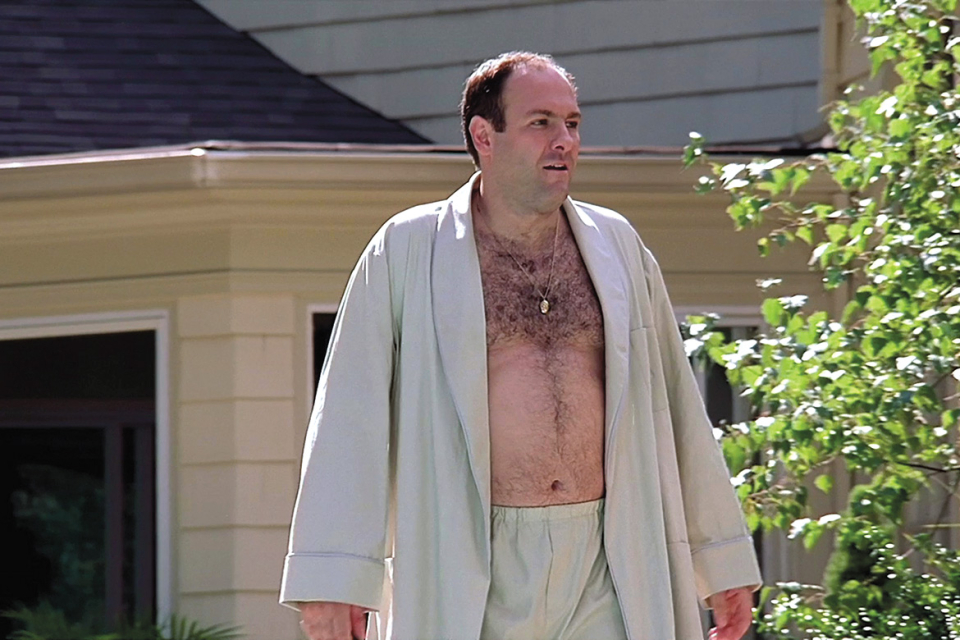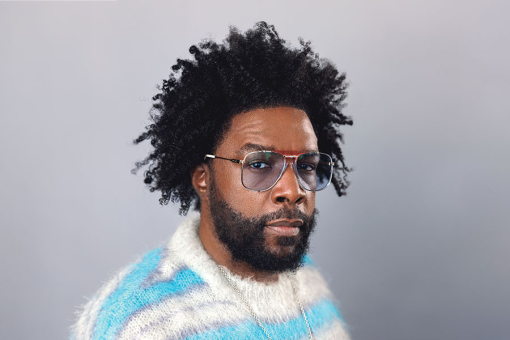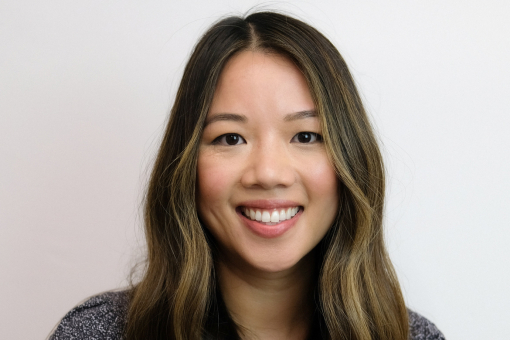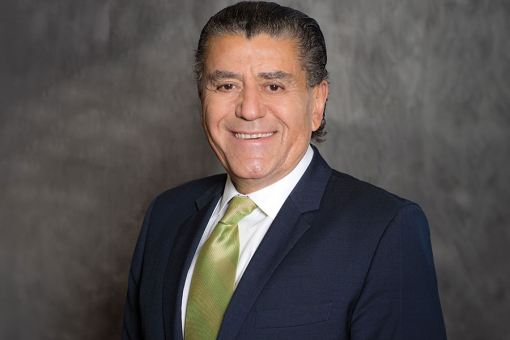In advance of the 2017 premiere of The Handmaid's Tale, Hulu devised a publicity stunt at the SXSW festival: hiring women to walk around the streets of Austin, Texas, in the bold red dresses worn by the show's handmaids.
Described in the book by Margaret Atwood and brought to life in the series by costume designer Ane Crabtree, the iconic uniform of the handmaid (a woman held in captivity in the fictional land of Gilead and forced to bear children) has become a symbol of women’s rights in the real world and is now on display at the Smithsonian National Museum of American History. Crabtree’s work on the series also earned her three Emmy nominations.
Raised in Kentucky, Crabtree was an early innovator in costume design, known for incorporating ideas from the worlds of fashion and visual art into her creations. Her designs for The Sopranos helped put her on the map, and work on Justified, Pan Am, Masters of Sex and Westworld soon followed. Her powerful take on visual imagery was recognized in 2018 when Fast Company named her one of its 100 Most Creative People in Business for “designing the apocalypse.” Collaboration is one of the hallmarks of Crabtree’s process. She enjoys delving into the layers of characters and helping actors find ways into their roles, believing that these creative exchanges elevate the emotional resonance of her projects. “I want to leave beauty and inspiration and thought-provoking ideology,” she says. “And if I design a good costume here or there, cool.”
Crabtree was interviewed in March 2023 by Adrienne Faillace, producer for The Interviews: An Oral History of Television, a program of the Television Academy Foundation. The following is an edited excerpt of their conversation. The entire interview can be screened at TelevisionAcademy.com/Interviews.
What was your path into fashion?
I really wanted to study fashion. My mother and my dad were always saying, “We don’t think you’re gonna make a living from that.” My parents were really strict — military father, Asian mother. I was really good in art, so I said, “Mom, is it okay if I study art?” So that’s what I did. I studied drawing, painting, ceramics … .
Where were you studying?
At first at a local college, the University of Evansville [Indiana]. But I really wanted to go away. So what I did, very sneakily, was apply to a sister college in England. I told my parents, “It’s this tiny place in England. I’ll be safe. Please let me go.” And they did. The best thing — aside from studying archaeology, Shakespeare and art history — was that on the weekends I took these fantastic trips to London, where I could observe all the street fashion that was happening, punk and otherwise. So that was twofold, education-wise.
From there did you go to New York?
I did. I eventually got a little bit of money to go to FIT [Fashion Institute of Technology] and study fashion design. I never finished, because I interviewed with [designer] Miriam Klein across the street from FIT, and she was like, “Can you start today?” Fashion is crazy hours, just like film. I was working 70 or 80 hours a week. I ended up dropping out of school, but I started doing really well in the fashion world, which led to fashion styling.
How did you go from the world of fashion into costume design?
I went from working as a fashion stylist to a job freelancing for Elle magazine. Then I started doing music videos for director Milcho Manchevski. My first work in TV was for Japanese and Chinese projects that were happening in New York. My first serious job in American TV was a Dick Wolf show called Swift Justice. I think in New York I kind of became known as that kid who married both fashion and TV or film. It’s done all the time now, but it was blasphemy then. Like, “Why would you even consider some retro design by Balenciaga for this character?” And I’d be like, “Well, it’s all right here.” In my brain, it was.
Not that long after Swift Justice, you were the costume designer on the pilot of The Sopranos.
Yeah. I met [creator] David Chase and [producer] Ilene Landress in a café. I had just come back from Italy for the first time, so I was all about everything Italian. I talked about my trip to Milan and Venice with David Chase, who is quintessentially Italian, albeit from New Jersey. I was so in awe of his quiet largesse and his beautiful mind, and his love for his familial story.
One of the most iconic looks for Tony Soprano in the pilot is the robe and shorts, when he's out with the ducks.
Oh my God. I got into so much trouble. I knew the robe was kind of audacious, for a large man to be out like that in front of his neighbors. But also, it was quite fragile for him. This [the ducks] was the thing that triggered him going into therapy. I thought of him as a kind of Jesus, which may not make sense, or maybe it does because of Catholicism in that world of Italian Mafia. I did dye this robe a thousand times, and I did choose that color, even though I was told it was too muted. I wanted him to be a part of the water. I wanted him to be a part of the ducks. I wanted him to be this otherworldly being, communing with something that he knew nothing about. The ducks accepting him, the water accepting him, and that being a sort of baptismal, off-screen story that happens. It was a seminal, cleansing moment.
You were the costume designer on season one of Justified.
Yeah. I love Timothy [Olyphant], because he’s very solid and all about his family. He’s really smart, and that already was the character of Raylan Givens. All I did was take the center of who Timothy was already, someone outsmarting everybody, and give him a little shine.
Is Justified where you started to do your research wall?
Oh! I forgot about that! I am in truth, at my very core, a very shy person. And as an artist, you always feel like a fraud, so why share your thoughts with anybody? But I remember being in love with this Rory Kennedy book, and many books on Appalachia. I was photocopying all of these books, and I was putting the pages in a very private shrine around my desk. It went from this creative shrine bubble I could look at to be inspired by while reading the script and breaking down the costumes, to my walls.
Then it kept growing. I was like, “I think I need to put these things out in the hallway, but I don’t want anybody to see them.” But I needed every inch of space. I started going out into the hallway. I always make my office the fitting room, because I can’t bear to leave the clothes, the process, the imagery. I noticed when they were bringing actors in for the fitting — and I would cringe every time — they would bring the actors through this hallway, this tunnel of photos outside my office, and the actors wouldn’t come in. They would be out there looking at images and talking about them.
Ultimately, other people started looking. DPs would be like, “If you don’t mind, I’m gonna use this shot.” And visiting directors would be like, “Where can I find this? I want to use this for the shot.” And I was, like, “Maybe my ideas are speaking to other people — actors, DPs, directors.” I still use that method.
What was your process preparing for The Handmaid's Tale?
I knew I wanted to make everything. I told my crew, “We are living in Gilead. We are the unseen makers of these clothes, and there are two factories; one is the factory for all the handmaids, the econowives, the aunts, the guardians. And one is for the wives, couture for the terrible Gilead people in charge.”
I researched what, through time, has stayed the same. And I looked at Adolf Hitler. And my most beautiful moment, where I felt like I did right by Margaret Atwood, is that we made her into an aunt. I didn’t tell anybody that I was looking at Adolf Hitler. Margaret Atwood came into her trailer, and there was the aunts’ uniform, tailored in military precision, with a little Prada thrown in — Prada got everything from military uniforms. Margaret Atwood didn’t say anything. And I was like, “Oh no, she hates it.” Then she nodded and goes, “Aha. Hitler,” under her breath. And I was like, “Yes!”
I read that there was a Bea Arthur-inspired element to the aunts' costume as well?
That’s my ’70s Maude! She wore these really long vests over a turtleneck and matching slacks. She would swing into a room. She had power. So I made the aunts a long coat that would swing, because of Maude.
We started to see the red handmaids' costume being used in real-life political protests. The first time was in Texas, when a group of women was protesting anti-abortion laws. What did it mean to you to see that costume being utilized in that way?
[The Handmaid’s Tale] did not come from me. It came from Margaret Atwood. She wrote it in 1980. It had such a huge impact on me as a young lady in New York City who came from a world of rules in the Midwest. The Handmaid’s Tale has had so many different incarnations, moments in time, because of the power it had.
A woman in Texas reached out to me saying, “Hey, we’re gonna do this. It’s gonna be a very positive thing. Is there a way you can give us your secrets about how you made the costume, so we can be impactful?” Being from Kentucky and a straight shooter, I was like, “Heck yeah. But it’s all owned by something else now, so while it is my idea, I cannot help you. But I can’t not help you.”
So I figured out a way to help give them ideas about how to do their own version. And it was stunning. Not just stunning as in gorgeous, but I was stunned into paralysis mode. Because it’s not something you think about. You guys showed up here for work today to go through your list of what you have to accomplish to fulfill your job, right? That’s what I was doing in Canada for Hulu on a job I was hired to do. From that to then appearing in real protests and fashion? Amazing.
We’re all here because we’re hoping to make a lasting image, or a lasting inspiration for others on Earth. Did it do that? I hope so. I want to leave beauty and inspiration, and thought-provoking ideology. And if I design a good costume here or there, cool. I did what I signed up to do.
Elisabeth Moss's costume is now in the permanent collection of the Smithsonian.
It is. It was a really big deal for my father, who loved history, loved Washington, loved the Smithsonian. My father and mother, little brother, my niece, and my great nieces were able to come to Washington, D.C. My father visited all the veterans’ monuments. We went to see the beautiful statute of Lincoln — huge, looming — that I had seen in films. My mother was reading the words on it, tears rolling down her face, shaking. I’m looking at her and crying — she studied that ideology in high school and memorized it when she came to the United States to become a U.S. citizen. So this was a huge moment for her as an American. Then we all got dressed up and went to the Smithsonian for the opening. My dad was carrying an oxygen machine, ’cause his lungs had been messed up. And he ran around like a little boy. I think he knew he didn’t have a lot of time left, and that was a personal dream, like seeing the Lincoln Memorial was a personal dream for my mom.
And to me, in a small way, yes, it makes you feel good that your parents aren’t embarrassed about you in the choices you’ve made. On a bigger note, my nieces — those brown-skinned little girls — they saw a person of color dream up something emotionally charged for women’s rights. Who knows how many little kids are walking through the Smithsonian — or any tiny, local art exhibit — and how that will be embedded in their brains for a wonderful, not only career, but life? There are millions of people who walk through the Smithsonian every day. And hopefully my nieces, and any young lady, will retain that, because it is a symbol of freedom.
You were also the costume designer on the first two seasons of Masters of Sex.
[Creator] Michelle Ashford — another genius. Brilliant writer, a strong woman in control — I love that. She was like, “Here’s this giant book. We want you to do this. It’s a feminist story told back in the day.”
The fittings were sublime. Lizzy [Caplan] was playful and serious and funny, and a very individual muse that I think looks like no one. She’s stunning. The writing was exquisite, the acting.
In a concept meeting a DP once said, “I’m never worried about how to light these actors, because when they come to set, they’re already lit. When you make the clothes, you are creating exactly the right tones for that moment.” That was the best compliment I ever got.
What would you say is the role of a costume designer?
The most basic thing is, we do all of the clothing, all of the costumes the actor wears throughout the story, but also, all of the background players. We’re telling a story nonverbally through what an actor wears. The other strings that come into play are the strings that guide, nurture and support the actor through the process of turning a Lizzy Caplan into a Virginia Johnson. That journey is done with music, images, but also a therapeutic, soft place to land. My office — the fitting room — is a magical space where it’s safe to practice extreme creativity and extreme vulnerability. Allowing the process of staying in one’s body, but leaving that shell and replacing it with the shell of this character. And believing it, not just putting on clothes.
Ultimately, the costume designer — or what I want to be as a costume designer — is someone who elevates the frame and elevates that actor. My responsibility is to take an idea and collaborate on that idea. At any moment of that job, I’m really trying to be like P.T. Barnum. I want to be the ringmaster of all these sideshows, and I want to mesmerize you. I want it to be something that you’re lost in. That is my job.
The contributing editor for Foundation Interviews is Adrienne Faillace.
Since 1997, the Television Academy Foundation has conducted over 900 one-of-a-kind, long-form interviews with industry pioneers and change-makers across multiple professions. The Foundation invites you to make a gift to the Interviews Preservation Fund to help preserve this invaluable resource for generations to come. To learn more, please contact Amani Roland, chief advancement officer, at roland@televisionacademy.com or (818)754-2829.
Click here to see more interviews.
The full version of this article originally appeared in emmy magazine, issue #5, 2024, under the title "Foundation Interview: Ane Crabtree."



